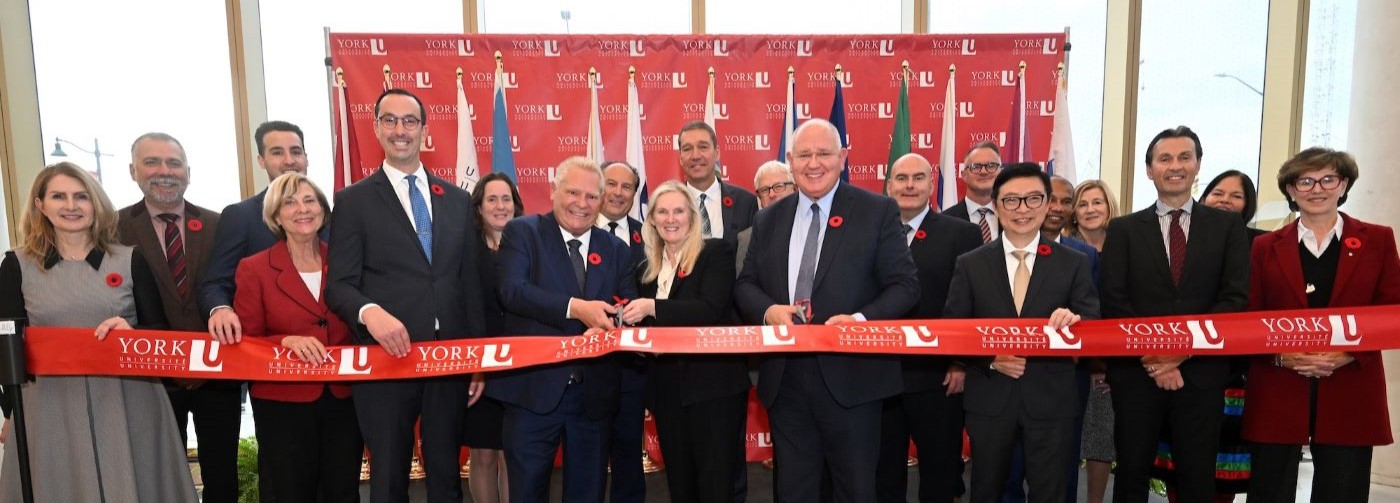Dark side of emoji challenges courts, Osgoode Adjunct Prof research finds
TORONTO, Monday, Feb. 26, 2018 – Emoji, those whimsical, humorous, affectionate, seemingly harmless little icons used in online communication, have a dark side that is proving to be a minefield for law reform around the world, according to Elizabeth Kirley, a Deakin Law School researcher and Adjunct Professor at York University’s Osgoode Hall Law School.
In a paper, called “The Emoji Factor: Humanizing the Emerging Law of Digital Speech”, to be published in the April issue of the Tennessee Law Review, Kirley and Deakin Associate Professor Marilyn McMahon, examined if society is prepared to expand protections to the casual, unmediated emoji speech if we should be more mindful of potential harms and liabilities that can arise when they are used in messages.
“Emoji are more than an innocuous new method of communicating,” said Kirley, who has LLM and PhD degrees from Osgoode and is teaching this winter in the JD program, as well as in the LLM program at Osgoode Professional Development.
“We found the icons are challenging lawyers, judges and lawmakers around the world, with their use being recognized in a legal context not as a joke or ornament but as a legitimate form of literacy.
“With cases coming before the courts where the intended meaning of emoji in interpersonal messages is unclear, with some resulting in jail time for the offenders, it is clear that the legal status of these images needs to be determined.”
Through a review of selected cases from American and European jurisdictions, the researchers examined emoji in criminal, tort and contract law contexts.
They found emoji injected emotion, creativity and ambiguity – or “humanity” – into computer-mediated communications. But that ambiguity came at a cost when these messages constituted evidence in legal cases involving interpersonal communications.
“These communications can challenge current doctrinal and procedural requirements of our legal systems, particularly as they relate to establishing guilt or fault through matters such as intent, foreseeability and consensus,” Kirley said.
“When, for example, do threats made with gun and bomb emoji by teenagers genuinely constitute harassment or even terrorism?”
The researchers identified four interpretative challenges posed by emoji for the judiciary or other conflict resolution specialists, characterizing them as technical, contextual, graphic, and personal.
Technical issues can alter perception when an emoji is viewed on different platforms, Kirley said. A heart-shaped emoji sent from your phone, for example, may come up as a series of squares on Facebook.
Context is also critical in translating a sender’s intentions, she noted. Ethnic, gender and other diversity-related cues in the selection of emoji, their sequence in relation to other images, the number of repetitions of each image, and the nature of any accompanying text or acronyms colour the meaning of messages as perceived by others.
Despite interpretation difficulties presented by emoji, their increasing inclusion in online messaging underlines the need for a legal response to digital speech that can confuse, threaten, defame, and otherwise offend its target, Kirley said.
“This paper asks: are we prepared as a society to expand constitutional protections to the casual, unmediated ‘low value’ speech of emoji?” said Kirley, who is Senior Lecturer and Chair of Law and Technology (on leave) at Deakin’s Faculty of Business and Law, Geelong Waterfront Campus, Australia.
The researchers conclude that a discrete legal space is needed in which accredited specialists in digital speech issues could assist judges to weigh evidentiary standards of probity and relevance in relation to emoji and their meaning.
“Within that framework a grammar or heuristic scheme would allow us to confidently interpret the meaning of these icons and to reliably understand when they negate or amplify intent and to decipher the human factor that emoji contribute to the law,” Kirley said.
-30-
About Osgoode Hall Law School
Osgoode Hall Law School of York University has a proud history of 129 years of leadership and innovation in legal education and legal scholarship. A total of about 900 students are enrolled in Osgoode’s three-year Juris Doctor (JD) Program as well as joint and combined programs. The school’s Graduate Program in Law is also the largest in the country and one of the most highly regarded in North America. In addition, Osgoode Professional Development, which operates out of Osgoode’s facility in downtown Toronto, offers both degree and non-degree programming for Canadian and international lawyers, non-law professionals, firms and organizations. Osgoode has an internationally renowned faculty of 60 full-time professors, and more than 100 adjunct professors. Our respected community of more than 18,000 alumni are leaders in the legal profession and in many other fields in Canada and across the globe.
About York University
York University is known for championing new ways of thinking that drive teaching and research excellence. Our students receive the education they need to create big ideas that make an impact on the world. Meaningful and sometimes unexpected careers result from cross-discipline programming, innovative course design and diverse experiential learning opportunities. York students and graduates push limits, achieve goals and find solutions to the world’s most pressing social challenges, empowered by a strong community that opens minds. York U is an internationally recognized research university – our 11 faculties and 26 research centres have partnerships with 200+ leading universities worldwide. Located in Toronto, York is the third largest university in Canada, with a strong community of 53,000 students, 7,000 faculty and administrative staff, and more than 295,000 alumni. York U’s fully bilingual Glendon campus is home to Southern Ontario’s Centre of Excellence for French Language and Bilingual Postsecondary Education.
Media Contacts:
Elizabeth Kirley, Adjunct Professor, Osgoode Hall Law School of York University, 416-436-4032, ekirley@osgoode.yorku.ca
Virginia Corner, Communications Manager, Osgoode Hall Law School of York University, 416-736-5820, vcorner@osgoode.yorku.ca






